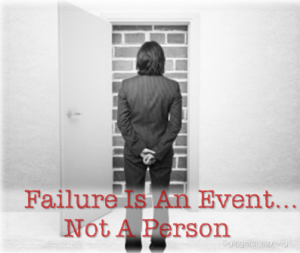While discussing the differences between (and need for both) push and pull influence styles at a workshop on Power, Persuasion and Influence workshop I facilitated for a group of Fortune 100 executive women, one woman shared a moving observation with the group. Her aha!?. While knowing which style of influence is to use is important, the core issue is one’s willingness to take the risk to influence, especially if the status quo is in question.
Her courageous take-away action item that day was to take the risk. She said she owed doing so to her colleagues, the organization and herself.
What a powerful moment.
“The person who risks nothing, does nothing, has nothing, is nothing, and becomes nothing. He may avoid suffering and sorrow, but he simply cannot learn and feel and change and grow and love and live.” ~Leo F. Buscaglia
Sometimes the risk is…being the square peg in the round hole, wearing kelly green when your colleagues are wearing charcoal grey, daring — albeit politely — to be the corporate contrarian, and/or dancing with the elephant in the room. Risking your secure place in the corporate food chain by questioning new practices that run contrary to stated values is a high stakes gamble. Will you be rewarded, take a small hit or lose it all?
According to Julie J. McGowan, professor at Indiana University, “Risk taking is hard to adopt among leaders, because recognized leaders have the most to lose and aspiring leaders may be discounted as lacking in knowledge or common sense.” Risk-taking can yield great rewards and possibilities for learning provided you’ve done your homework ahead of time.
Research (Wallach,Kogan, Bem) shows that “women are more conservative when they make decisions under conditions of uncertainty; however, they are more extreme in their judgments when conditions are certain. This result is generally explained by reference to the constraining influences females are exposed to in the socialization process. Males are reinforced for exploratory (i.e., risk-taking) behavior; females are encouraged to be more conservative.”
7 questions to assess your readiness for risk taking
Risk-taking requires high EQ, PQ (political quotient), a thorough knowledge of your work culture and solid self-confidence. To assess how ready you are to take a risk at work, ask yourself these questions:
1) Historically, how has your corporate culture reacted to those who challenged the status quo? Are you prepared to accept possible negative outcomes? Are you willing to see your credibility erode? Are you equipped to lose your job?
2) Is this an issue that’s important to you alone, or do others share similar concerns? Will others who think/feel/believe the same speak up after you’ve led the charge, or will your voice be the only one that’s speaking? Are you ready to forge ahead regardless?
3) Are you able to be the center of attention if your topic goes viral within the company? Are you primed to be a role model and/or attacked?
4) Do you have solid solutions already in mind? Are you disposed to collaborate with others and devise a solution that integrates the views of many?
5) Have you brainstormed possible unintended consequences, both positive and negative, of the stand you’re championing?
6) Are you OK, mentally and emotionally, with the possibility of failure? Will your self-esteem survive the hit? Can your ego resist the adulation of success?
7) Do you have the will to see it through? Do you have a support system that will nurture you throughout, regardless of the outcome?
Risk tolerance is extremely personal. Only you can decide if high risk/high reward is your métier or if low risk/low reward represents the boundaries of your comfort zone. Either way, be prepared, be thoughtful and do what’s right for you.
 We all fail. There is it. Simple and plain, no one has ever not failed in life. No one. It happens to all of us at some point in our journey. Not one of us can claim the moniker of perfection. We are imperfect in our own unique ways.
We all fail. There is it. Simple and plain, no one has ever not failed in life. No one. It happens to all of us at some point in our journey. Not one of us can claim the moniker of perfection. We are imperfect in our own unique ways.